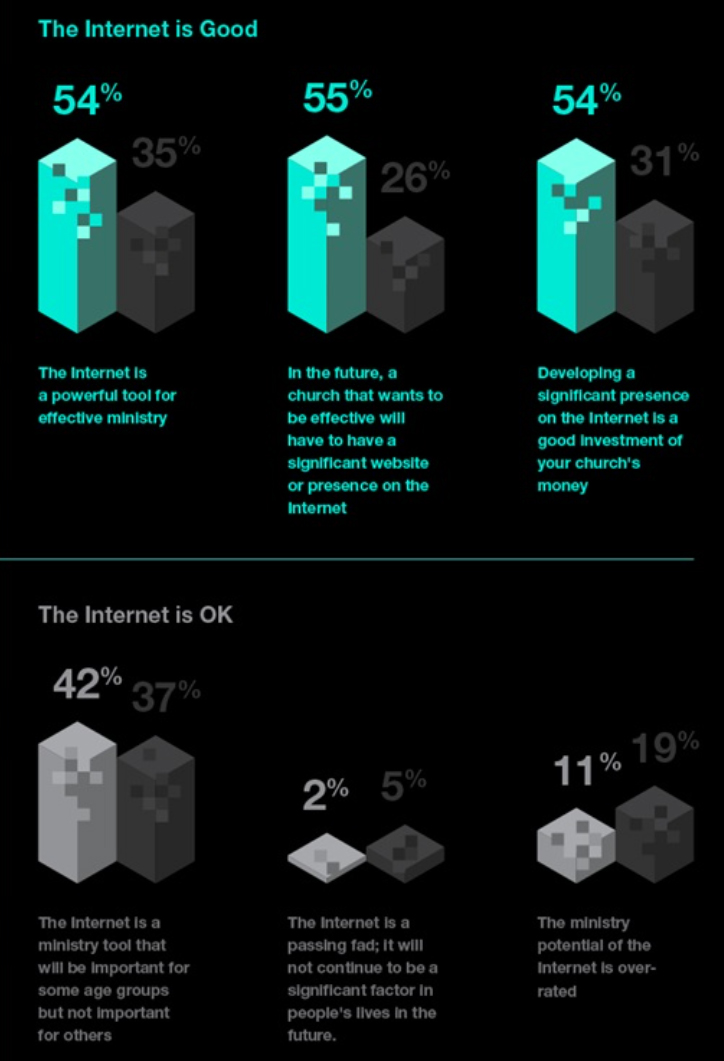How Failing to Embrace Technology Is Dooming the Church
This post will look at how the role of pastor must change. The basic job description (much of it still important) falls short of the skills that most churches desperately need. Today’s Church serves a different world.
I have some fear that the points I am about to make might be read as unfairly critical of the Church and clergy. That’s not the intention. Clergy are important. So is the Church.
Clergy work in relative isolation and with a sense that they have no competition. They can deflect issues. Decline is the laity’s fault. It’s demographics. It’s cultural. It’s society. Real factors—but factors that can be addressed. Failure to do so has created dire problems.
The world has changed dramatically in the 28 years which constitute the entire life of the Evangelical Lutheran Church in America. As they worked to establish an identity based on the past, the past disappeared in the rear view mirror. The desktop computer was entering the workplace as church leaders signed the agreements with old-fashioned pens. But Lutherans are not alone. Most mainline denominations have held back to the point of endangering their survival.
Churches, too, sense that they have no competition. They don’t have to change. They are wrong. Churches compete with one another and with every other nonprofit that courts our members and potential members for support. We also compete with the government who levies taxes that impact church giving.
We cannot compete without using the internet.
Changing Expectations
Job descriptions of most professions changed dramatically in the last 20 years as technology became widespread. Clergy job descriptions remain much the same. Integrating technology into ministry has not been a priority.
This becomes increasingly frustrating to laity. We sense that each year of no progress just makes rejoining the world that much harder.
If clergy and laity explored this together, clergy would find that parishioners understand the challenges. We are experienced.
A Look at How the Internet Has Changed One Profession
I’ve worked in graphic design for 35 years and in related fields for a few more. Graphic design involves communicating with words and images. My first employer in 1975 was still using hot type. That’s individual letters cast in metal and positioned in mirror image by hand before being inked and pressed to paper. Picture Ben Franklin setting Poor Richard’s Almanac. Same process, fancier machines.
I was progressive. I learned cold type—type set in a photographic process. I marked up manuscripts and sent them to a typesetter. I pasted the typeset galleys on boards with hot wax. These were then sent to printers who took photos and burned plates that were attached to printing presses. The process required multiple skills. At least ten people were involved in getting the simplest publication printed. Writer, editor, typesetter, proofer, designer, dark room staff, film strippers, press operators, binders and distributors.
All of these tasks would soon be the job description of one person.
Enter the desktop computer.
Again, I was progressive. I learned computers while many old-school graphic designers took early retirement or changed careers.
But things were only starting to change.
Another ten years passed. The desktop computer led to the internet and instant connectivity. Online communication soon outpaced print.
Things continue to change.
Today’s typical “graphic designer” job description demands skills that have nothing to do with yesterday’s job description. We are now expected to know marketing, a half dozen computer coding protocols and sales. Video and animation helpful but not required.
Ditto for most professions. Education, medical professions, law enforcement, business management—you name it, the professionals in these fields adapted technology to their work—or they found new work.
The Pastoral Job Description

This recent study reveals the slow progress church leaders have made in the last 15 years in adopting technology.
Similar changes should have been taking place in the world of Church. Instead, the Church became an escape. Seminaries began attracting second career students who may not have liked the technology changes in their first career choices. Fewer young people considered church careers. The pulpit has greyed faster than the congregations!
Today, the Church needs to reach people that know little about the good old days of Christianity in America. This frustrates lay leaders. We sense that the Church is distancing itself from the world we live in.
For a while congregations could float on endowments. Time is running out.
To expect congregations to invest all their resources in one person with an outdated job description is worse than poor stewardship—it is guaranteeing failure.
Pastors need to embrace technology. They must spend time each week reaching the unchurched online. The 20-minute Sunday sermon is less important. Pastors need to attract and inspire using FaceBook and Twitter. They must create email lists addressing diverse interests. They must write email engagement sequences to introduce the Church to those who will not come to church until they know more about us from online interaction. They must find ways to connect and collaborate with other organizations in the neighborhood. They must explore alternative funding initiatives and expand the geographical borders of their congregation and find they will have to cooperate with other nearby churches. All possible via technology.
The Plight of Most Congregations
Congregations have little choice but to choose from the existing stable of denominational pastors, whether or not they can use modern tools.
Congregations are offered pastors who expect a secretary to do the typing and see a monthly newsletter as effective communication. They still wait for “seekers” to come to them on Sunday morning.
As statistics decline, denominational leadership sighs and mutters “demographics.” Pulpits are filled, using up resources, while neighborhood congregations are left to die as if this is the natural progression of the Church. It’s not—or at least it wasn’t until the modern era.
Return to a Biblical Mission Plan
It is time to return to a biblical mission plan—meet people where they are.
RECENT STATISTIC: The average FaceBook user spends 50 minutes each day on FaceBook. An increase of ten minutes per day from last year.
It will change the nature of Church. It will redefine job descriptions and the meaning of community. It will open doors that have been shut to Christians They were never locked. Christians just didn’t bother opening them.
It will force change that is long overdue. Nobody is picking on anyone. It is just how things have to be.
The next post will illustrate why this must happen at the parish level. Here’s a hint at why: Local parishes are unwittingly funding their own demise.

